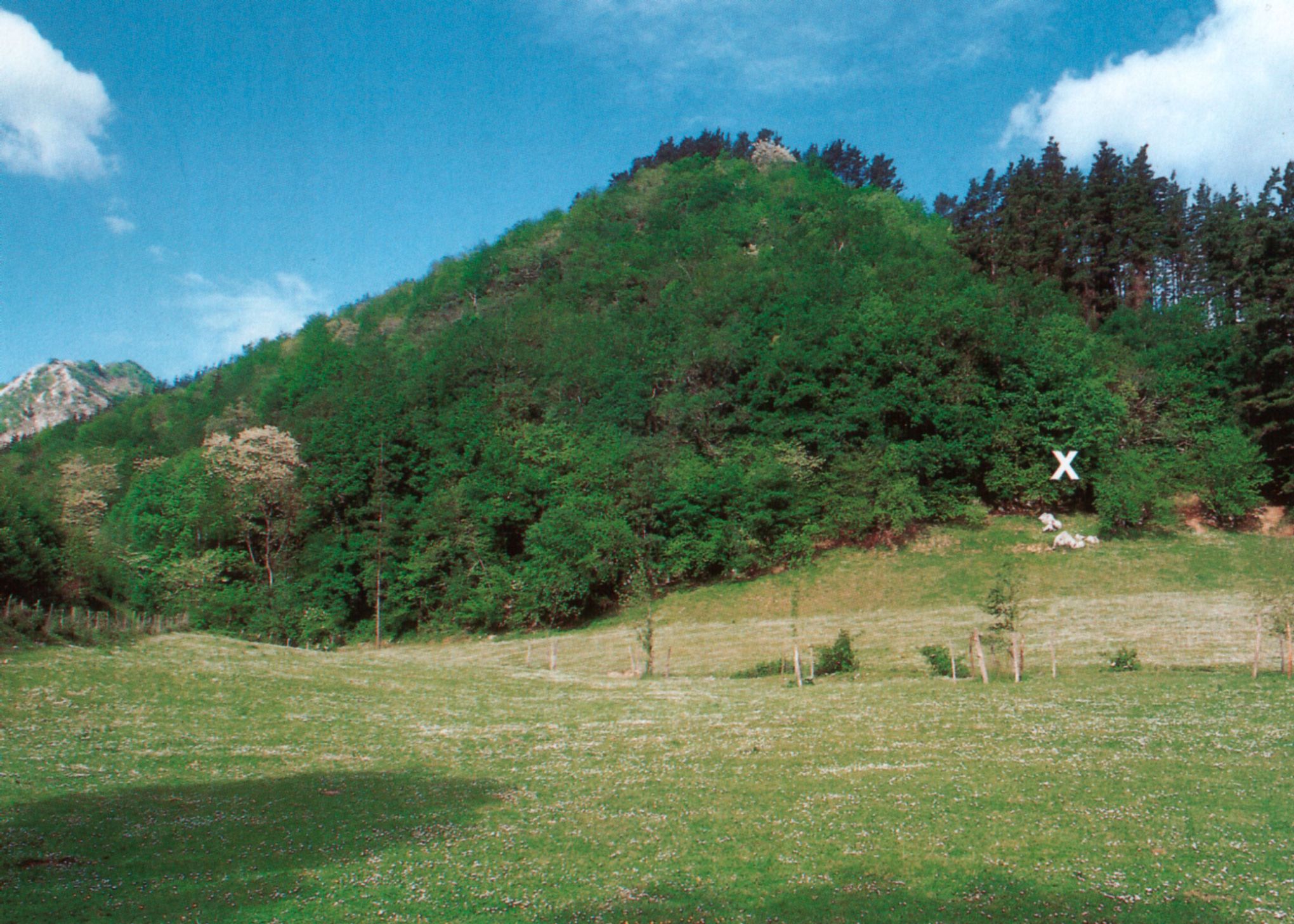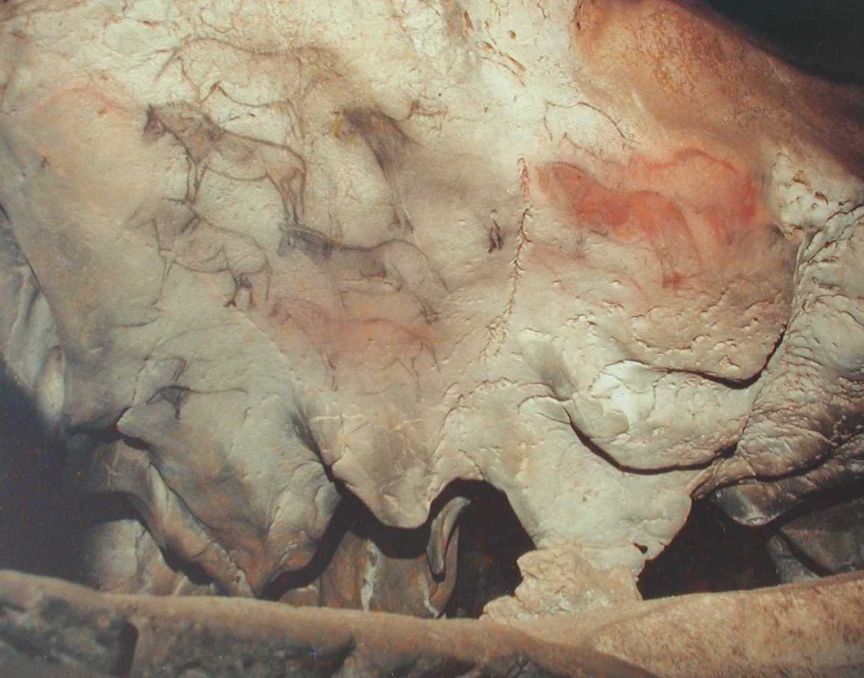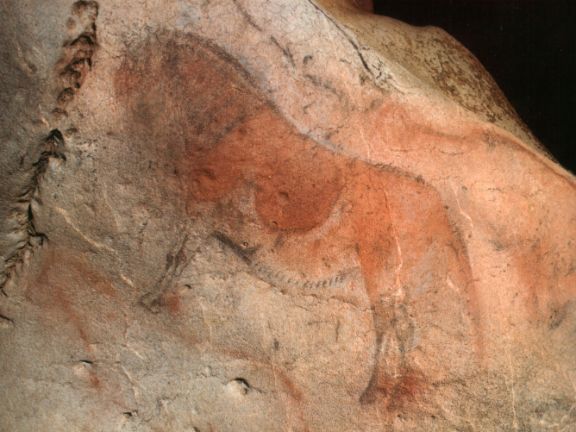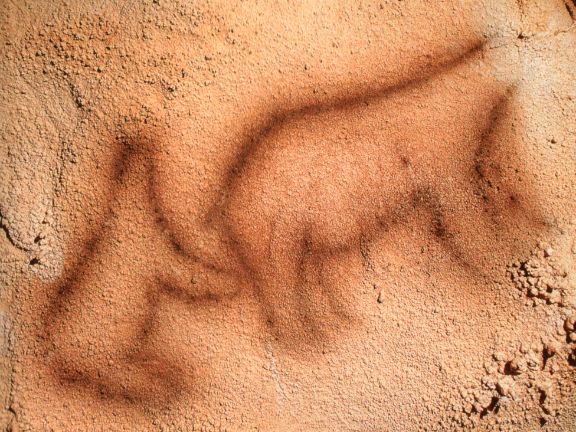Ekain Cave

Identification of the Property
SubirDeba, Guipúzcoa, Basque Autonomous Community
Geographical coordinates
UTM 30T 558903E / 4787485N Z: 90
Description
SubirTopographic description
Ekain Cave is located on the eastern side of Ekain Hill, about 100m above sea level, in the municipal district of Deba and very near Zestoa. The cave takes the form of an intricate maze, with a length of approximately 150m from the entrance to the end.
Date of Discovery
The site was discovered in 1969 by members of Antxieta Kultur Taldea Cultural Association. They made the first dig, and explored the cave after removing a collapse that had blocked the passage. The cave was gated immediately afterwards.
 Pulse para ampliar
Pulse para ampliar
Archaeological research
J. M. Barandiaran and J. Altuna produced the first study of the Palaeolithic art in the cave, which they published in the same year as the discovery. They also dug the archaeological deposit at the entrance during a series of annual excavations between 1969 and 1975. Other eminent Basque prehistorians, such as J. M. Apellániz and J. M. Merino, collaborated with this work.
In 2008 Ekainberri, the replica of Ekain and his paintings, was inaugurated 600 m before the original entrance, made by R. Sanson under the direction of J. Altuna and K. Mariezkurrena.Salto de línea Salto de línea As a result of the analysis and application of new techniques, new figures of horses have been discovered with a technique very different from those already known: based on engravings in the wet mud of the walls. These investigations, carried out by B. Ochoa, M. García and I. Vigiola, conclude the coherence of the pictorial set and the engravings.Salto de línea
Artistic contents: paintings and engravings
Ekain Cave holds one of the main Palaeolithic art assemblages in north Spain, as it is almost uninterruptedly decorated from its entrance to its end. It follows the model of a shrine with a main passage and one or several side-passages, although in this case sections of different passages have been used to build up a longitudinal ideal line with two side-passages.
Some 70 depictions are known, of which 59 are clear animal figures, while the others are signs or figures that are difficult to interpret. As well as the art, finger impressions have been recognised in some sectors of the cave. Over half of the figures are horses; bison and ibex are the next most common, and deer, bears, fish and possibly rhinoceros are also represented.
Most of the figures are painted in black, although red and bichrome figures also exist. Six figures are engraved and others use both techniques. The paintings in the shrine of Ekain appear to be the work of different people, but the group of horses is attributed to a single exceptionally-skilled artist, comparable with the painter of the polychrome bison at Altamira.
 Pulse para ampliar
Pulse para ampliar
 Pulse para ampliar
Pulse para ampliar
The art has been classified in five groups, where the most numerous and representative Group II has been divided into sub-groups A and B.
Group I, called Auntzei or “Place of Goats”, consists of 21 figures in the first part of the main passage and the first side-passage. It includes the forequarters of a large horse, another two horses, two deer, a salmon and four ibex, one of them lying down. The back and hind legs of a bison, another roughlydrawn bison and the outlines of a horse and bison complete the group. All are painted in black, apart from the pair of deer, which are engraved.
The second group is Zaldei, “Place of Horses”, with 40 animal figures as well as other non-figurative images. Sub-group A corresponds to the large panel of horses, the most important figures in the shrine, located on an overhanging wall. The group begins with a hind and a bison. Another two bison in black and red are found above these, followed by two equally bichrome horses. To the left there is the front part of a horse and an incomplete bison. In front, the outline of an ibex, with a horse and hind-quarters of a horse below. Below these, there is a horse painted with a black wash and another bichrome horse, whose front and hindquarters have been attributed to different artists. Further horses are depicted in black or with black outlines and red colour wash representing part of their coats.
Sub-group B is on the opposite wall and in the side-passage next to this. The wall has two bison outlined in black, and another numerous group of horses. Some are only outlined in black, while others are filled with colour wash.
The side-passage has a painted and engraved bison. Finger-impressions can be seen at the end of this passage, and near the passage leading into this area there is a horse in red colour wash, difficult to identify.
Group III, Artzei, is in a widening of the main passage and has paintings of two brown bears; the larger one is headless and the other is complete. They are schematic figures, quite different in style to the previous figures.
At the end of the passage, Group IV or Azkenaldei has a group of seven horses facing towards the entrance, organised in rows and with similar characteristics to the horses in the main panel. Five of them are engraved as well as painted. A black undulating line and the front of a horse in red colour wash complete the group.
The repertoire was closed with an engraving on clay, made with the finger, of what looks like a deer head. To this, with the same technique, several recently discovered horse outlines have been added, made in an inlet called La Fontana.
J. Altuna and J. M. Villar favour a date for this assemblage in the middle Magdalenian, as it appears to correspond to the early and later phases of Leroi-Gourhan’s Style IV. Estudios recientes retrasan esta cronología hasta momentos más tardíos del Magdaleniense.
Bibliography
SubirAPELLANIZ, J. M. 1982. El arte prehistórico del País Vasco y sus vecinos. Bilbao: Desclée de Brouwer.
ALTUNA, J. 1975. Lehen Euskal Herria. Guía Ilustrada de Prehistoria Vasca. Bilbao: Ed. Mensajero.
ALTUNA, J. 1983. Bases de subsistencia en los pobladores del yacimiento de Ekain a lo largo de su ocupación. Cuadernos de Sección. Antropología-Etnografía, Prehistoria-Arqueología 1: 33-42. San Sebastián: Eusko Ikaskuntza.
ALTUNA, J. 1997. Ekain y Altxerri. Dos santuarios paleolíticos en el País Vasco. San Sebastián: Haranburu Editor. ALTUNA, J., APELLANIZ, J. M. 1978. Las figuras rupestres paleolíticas de la cueva de Ekain. Munibe 30: 1-151. ALTUNA, J., APELLANIZ, J. M. 1989. Euskal Artearen Historia. Historiaurrea. San Sebastián: Ed. Kriselu.
ALTUNA, J., MERINO, J. M. 1984. El yacimiento prehistórico de la cueva de Ekain (Deba, Guipúzcoa). San Sebastián: Eusko Ikaskuntza.
BARANDIARAN, I. 1974. Representaciones de caballos en la cueva de Ekain. Estudios de Arqueología Alavesa 6: 47- 56.
BARANDIARAN, J. M. DE, ALTUNA, J. 1969. La cueva de Ekain y sus figuras rupestres. Munibe 21: 331-386.
BARANDIARAN, J. M. DE, ALTUNA, J. 1977. Excavaciones en Ekain (Memoria de las campañas 1969-1975). Munibe 29: 3-58.
GARCÍA-DÍEZ, M., OCHOA FRAILE, B., GARCÍA-DÍEZ, M. 2019. Coming back to Ekain (Deba, Gipuzkoa): a new Upper Palaeolithic graphic ensemble in the Erdibide Passage Retorno a Ekain (Deba, Gipuzkoa): un nuevo conjunto gráfico paleolítico en la galería Erdibide, Munibe 70: 65-71.
GONZÁLEZ SAINZ, C., CACHO TOCA, R., ALTUNA, J. 1999. Una nueva representación de bisonte en la cueva de Ekain (País Vasco). Munibe 51: 153-159.
MARIEZKURRENA, K. 2006. Cueva de Ekain (Deba, Gipuzkoa) Protección, Conservación, Difusión y Réplica. Munibe 57 T. III. Donostia-San Sebastián.
OCHOA FRAILE, B., VIGIOLA-TOÑA, I., GARCÍA-DÍEZ, M., GARRIDO-PIMENTEL, D. 2018. “Más que pinturas de caballos en la Cueva de Ekain (Deba, Gipuzkoa): los grabados digitales paleolíticos en Europa Occidental”. Trabajos de Prehistoria, Vol. 75, No. 1: 146-154.
ROUSSEAU, M. 1974. Darwin et les chevaux paléolithiques d’Ekain. Munibe 26: 53-56.
SANSON, R. 2006. La mise en oeuvre de la réplique d'Ekain et de sa scénographie. Munibe 57 T. III. Donostia-San Sebastián.
VV.AA. 2019. Ekain: Historiaurreko zaldien magia - La magia de los caballos de la Prehistoria. San Sebastián: Aranzadi Zientzia Elkartea.



